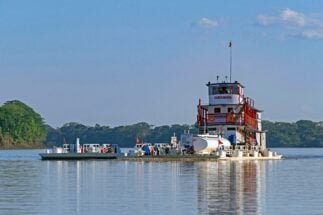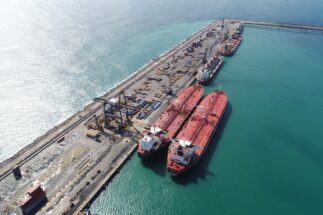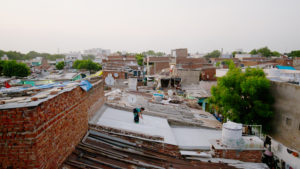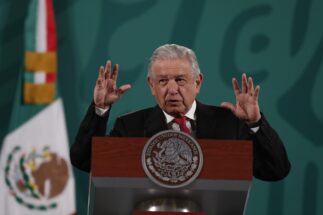The Amazon is the world’s largest forest and river system and a provider of ecosystem services that have benefits on a global scale. However, various economic activities, both legal and illegal, drive the loss of large areas of forest. In 2020, the Amazon lost some 2.3 million hectares of forest in the nine countries of the basin.
These pressures have intensified the effects of climate change, and with it the social and economic vulnerability of mainly rural and indigenous populations. This vulnerability can be particularly acute in countries such as Brazil, Colombia and Peru, which are among the most dangerous for environmental defenders.
Balancing the conflicts of environmental degradation, development and economic growth has long been a challenge for the nations of Latin America and the Caribbean, which face significant infrastructure gaps and genuine needs for investment. Against this backdrop, 19 countries in the region have joined China’s Belt and Road Initiative (BRI), which proposes economic, commercial, social and cultural integration, mainly through the development of transport and energy projects.
However, since its launch in 2013, the development of rules applicable to the BRI has so far not kept pace with investment – something that new guidelines jointly issued this year by two Chinese ministries seek to address. But such guidelines, we argue, should go further to acknowledge the specific character of the Amazon, its environment and communities.
Green development guidelines
In July this year, the Chinese Ministry of Commerce (MOFCOM) and Ministry of Ecology and Environment jointly published “The Green Development Guidelines for Overseas Investment and Cooperation”, under the framework of the BRI. It lists three main objectives: pollution prevention, climate change mitigation and biodiversity conservation. These guidelines are voluntary.
The guidelines encourage Chinese companies to mitigate risks of environmental impacts in their overseas investments, and urges them not to rely solely on host country standards. It also encourages them to align with international agreements such as the 2030 Agenda for Sustainable Development, the Paris Agreement, and the Convention on Biological Diversity, among others.
The green development guidelines recognise the importance of implementing tools such as strategic environmental assessments (SEA), as well as measuring greenhouse gases. Another recommendation is to incorporate mechanisms for handling complaints related to non-compliance with environmental and social obligations to enhance accountability.
Adapting to the Amazon
The unique characteristics of the Amazon and the lessons learned from the implementation of infrastructure and energy projects in the region – many by Chinese companies – mean they should be taken into account in guidelines on overseas projects.

For example, it is essential to incorporate a social dimension so that projects contribute to local development and avoid conflicts, which are frequent in the region. Examples of successful social projects jointly implemented by local communities and international investors include: the Inter-American Development Bank and the community environmental monitoring programme (PMAC-BU) for the Camisea gas project in Peru’s Lower Urubamba river region; and, also in Peru, the World Bank’s collaboration with the Abya Yala Indigenous Forum on the Good Practice Guidelines on Education, Health, Natural Resources and Productive Development.
With these considerations and experiences in mind, we make the following recommendations for implementing the guidelines in the Amazon region.
– The approval of projects, at least those of high complexity in terms of their potential social and environmental impacts, should be linked to the existence of an SEA. It is in contexts with strong pressures on natural resource use and pockets of poverty that SEAs become particularly important, according to the OECD.
– Green development guidelines must be based on international standards for environmental impact assessments (EIA). As has been recognised by assessments commissioned by the International Finance Corporation, the private lending arm of the World Bank, the approach to EIAs in Latin America and the Caribbean tends to be more reactive, and lacks input from the populations living in the areas affected by projects. Therefore, the guidelines should demand that EIAs be based on World Bank, IFC or other international standards.
– Roads in the Amazon – both new and improvement works – should be classified as “red”, according to a traffic light system for classifying project risk proposed by Chinese government advisors in 2020. Road infrastructure generates mainly indirect and cumulative impacts in the Amazon, which can extend more than 50km from the road route.
Road infrastructure generates mainly indirect and cumulative impacts in the Amazon, which can extend more than 50km from the road route
– The Green development guidelines should adhere to the principles and objectives of the Escazú Agreement, the first international agreement to create a protection framework for environmental defenders. It should include guidelines on disclosure and access to environmental information and participation, with cultural relevance.
– The approval of projects should be linked to the implementation of the right to prior consultation, establishing a mechanism for intercultural dialogue where the populations and civil society can monitor compliance with consultation agreements. Organisations such as the Coordinator of Indigenous Organizations of the Amazon River Basin (COICA) already have prior consultation protocols.
The recommendations outlined above could serve as a starting point for further input from Amazonian organisations in areas such as indigenous oversight and monitoring of existing projects, and improving the prospects for environmental and social sustainability in the development of new projects.








